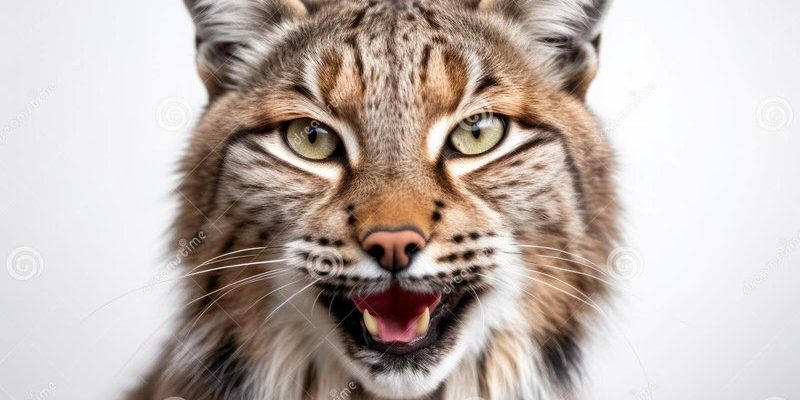
Imagine a cat that’s a bit larger than your average house pet, with tufts of fur sprouting from its ears and a short tail that seems to give it an air of curiosity. That’s the lynx for you! But despite their cool looks and unique traits, many people have a bunch of wrong ideas about them. Understanding the truth about lynxes not only helps us appreciate these animals better but also sheds light on their role in the ecosystem.
Myth 1: Lynxes Are Just Big Cats
Many folks think of lynxes as oversized domestic cats, but that’s not quite right. While they share some similarities, lynxes belong to a different group of wild cats. They belong to the genus Lynx, which includes four species: the Canada lynx, the Eurasian lynx, the Iberian lynx, and the bobcat. Each has unique traits and adaptations for survival in their respective habitats.
For starters, one of the most notable differences is their physical appearance. Lynxes have longer legs and larger paws compared to typical cats, which help them glide over snow. Their distinctive ear tufts, which can be 2–3 inches long, are not just for show—they actually help with hearing. So, while your kitty might look cute sprawled out on a bed, a lynx is built for hunting and thriving in the wild.
Myth 2: Lynxes Are Fierce Predators
You might picture lynxes as ruthless hunters, stalking their prey with stealth and ferocity. The truth is, they’re expert hunters, but they aren’t the fearsome creatures many imagine. Lynxes rely on a stealthy approach rather than sheer brute force. They often hunt alone and primarily target small mammals, like snowshoe hares, which they catch with incredible agility.
Interestingly, their hunting style is all about patience. They stalk quietly, using their keen eyesight and hearing to locate prey. When they finally pounce, it’s often a calculated move rather than a wild chase. This unique hunting method showcases their adaptability rather than aggression, making them fascinating animals to observe in their natural habitats.
Myth 3: Lynxes Are Common Pets
Some people might think that because lynxes are cat-like, they could be kept as pets. That’s a huge misconception. Lynxes are wild animals with specialized needs that cannot be met in a home environment. They require large territories to roam, specific diets, and certain social structures to thrive—things that simply aren’t available in a typical household.
Adopting a lynx as a pet could be dangerous for both the animal and the owner. These cats have instincts that drive their behavior, and they can become stressed or aggressive in confined spaces. Instead of thinking about keeping a lynx as a pet, consider supporting wildlife conservation efforts that protect their habitats and promote their well-being in the wild.
Myth 4: All Lynxes Are Endangered
It’s easy to assume that all lynxes are on the brink of extinction due to habitat loss and hunting. While it’s true that some species, like the Iberian lynx, are critically endangered, others are doing relatively well. The Canada lynx, for example, has a stable population in some areas of North America thanks to conservation efforts and protected habitats.
That said, it’s vital to remain aware of the threats that many lynx populations face, including habitat destruction due to urbanization and climate change. Understanding the conservation status of different lynx species is key to supporting the right efforts that make a difference.
Myth 5: Lynxes Are Solitary and Anti-Social
You might think that lynxes are lone wolves—err, cats—staying away from one another to live their best lives alone. While they generally live solitary lives, especially during the mating season, lynxes aren’t entirely anti-social. They communicate with each other through vocalizations, scent markings, and even visual displays.
During mating season, male and female lynxes will seek each other out, and mothers are dedicated to their young. They show a nurturing side as they care for their kittens until they’re old enough to fend for themselves. So while they enjoy their alone time, lynxes do have social interactions that play an essential role in their life cycle.
Myth 6: Lynxes Only Live in Cold Climates
When you think of lynxes, it’s probably in relation to snowy landscapes and frosty forests. However, not all lynx species are restricted to cold climates. The Iberian lynx, for instance, lives in the Mediterranean region of Spain and Portugal, where the environment is quite different from the snowy areas of North America.
Lynxes are remarkably adaptable animals. They thrive in a range of habitats, from dense forests to scrublands. Their ability to adjust to various environments helps ensure their survival, as they find different prey and shelter types. Understanding their habitat preferences can help in conservation efforts and ensure they continue to thrive in the wild.
Myth 7: Lynxes Are Bad For Livestock
Some farmers might think that lynxes pose a significant threat to their livestock. Here’s the thing: while any wild predator can impact farm animals, lynxes primarily feed on small mammals. They are not typically a significant threat to livestock. In fact, having lynxes around can help control populations of rodents and other small animals that might cause problems for farmers.
It’s essential to view lynxes as part of a balanced ecosystem. Healthy predator populations can contribute to the overall health of the environment and support agricultural practices by keeping certain prey populations in check. Promoting coexistence between farmers and lynxes can lead to a healthier landscape for both.
In conclusion, understanding the true nature of the lynx can help dispel myths and lead to better conservation efforts. These cats are remarkable in their own right—each species with its unique traits and adaptations. As we learn more about them, let’s embrace the opportunity to appreciate and protect these beautiful animals and their habitats. So next time you hear someone talking about lynxes, you can share the facts and help clear up those common misconceptions!

